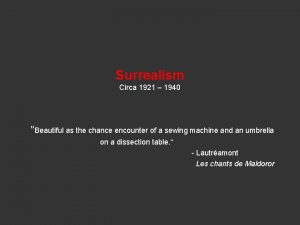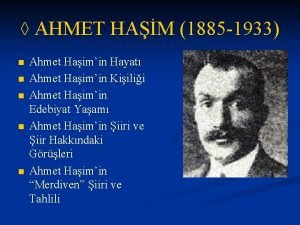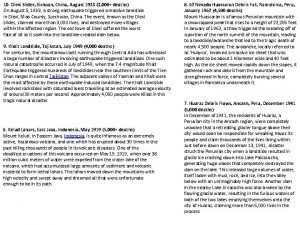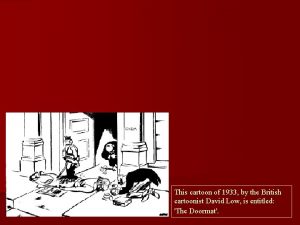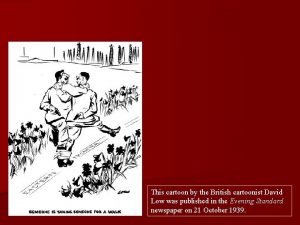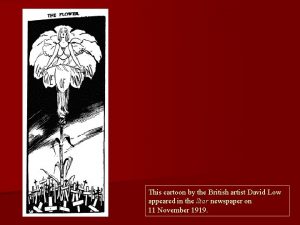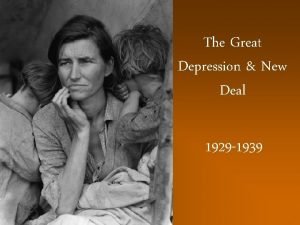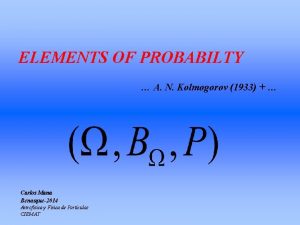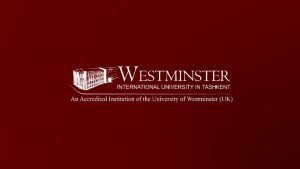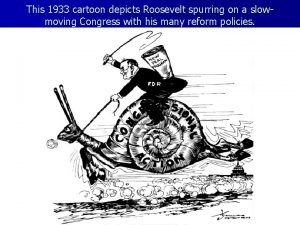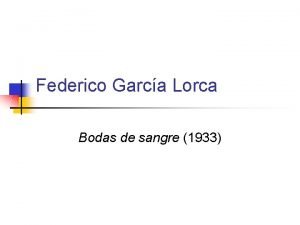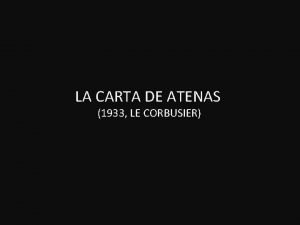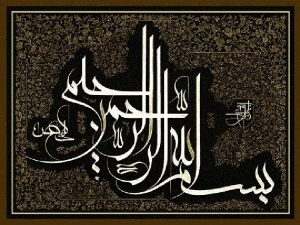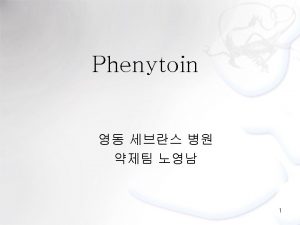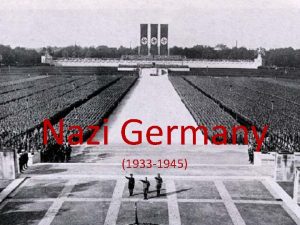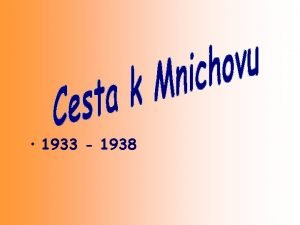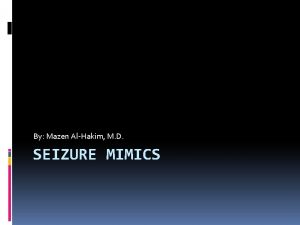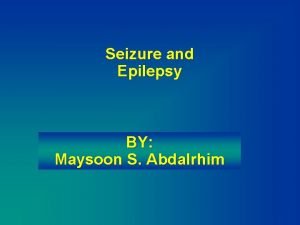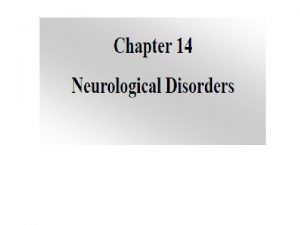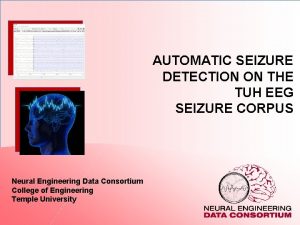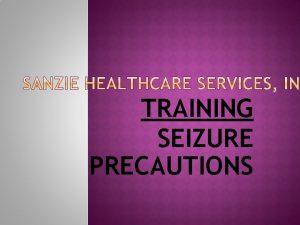The Nazi Seizure of Power 1930 1933 Daily














- Slides: 14

The Nazi Seizure of Power: 1930 -1933

Daily Question What factors help the Nazis gain support between 1929 -1933? How does Hitler begin the “Nazification” process in early 1933?

The Nazi Seizure of Power After the loss of 1928, Nazis reoriented their political and propaganda strategies. Cities ultimately rejected NSDAP Farmers suffered from an agrarian crisis even during the period of stability in Weimar Nazis use völkisch rhetoric of traditional rural farmers being the foundation of Germany Also downplayed their socialist rhetoric to focus on middle class workers in small towns Defenders of the middle class against Marxism and big business Nazi anti capitalist message only directed towards some groups: Jews, international finance, and large corporations Small towns, villages, and peasant farmers became the new focus of the NSDAP for the 1930 election

The Nazi Seizure of Power Events helping the Nazis in 1929 Changes in the Young Plan (the successor to the Dawes Plan)cause uproar over reparations Nazis and big industrialists form temporary alliance over Young Plan and hatred for Weimar This alliance allowed massive funds to flow through the propaganda machine Nazis now considered leaders against Versailles, Weimar, and Young Plan Hitler’s nationwide speeches gain national recognition

The Nazi Seizure of Power The Great Depression and Nazi support Stock market crash has immediate effect on Germany Four million unemployed by 1931. People moved away from the DNVP and the DVP since they tended to back big business By 1932 -1933, about 20 million out of 65 million were living on public assistance Middle class becomes increasingly uneasy By March 1930, the “Great Coalition” that was led by Streseman (who died on October 3 1929) collapsed.

The Nazi Seizure of Power President more commonly uses emergency powers to run the state Heinrich Brüning first chancellor to lead government during the Great Depression Presidential politics allowed Brüning and President Hindenburg to work above parliament Votes of no confidence had no effect due to Article 48 allowed suspension of parliamentary rulings and votes during times of “crisis” (Great Depression)

The Nazi Seizure of Power Election of September 1930 NSDAP appears as dynamic and new compared to DNVP and DVP Nazi propaganda incredibly effective NSDAP receives roughly 18% of the vote, with 107 seats in the Reichstag Second largest party in Germany, behind the SPD (147 seats) After election, hundreds of thousands of workers joined the party, but still considered a party for the middle class Elites and middle class membership grew as well New elites were used to run the much larger party apparatus after 1930 Brüning forced to form minority cabinet and continue rule through presidential emergency powers

The Nazi Seizure of Power Nazi propaganda continued at a relentless pace Party membership increased at an alarming rate, as well as the SA SA membership many times the size of the German army by 1932 election Hitler decides to run for public office for the first time in April 1932 presidential election (after solving his citizenship status) President Hindenburg ran against a handful of far right candidates SPD and Catholic Center rallied behind the president, faced off primarily against Hitler loses the election to Hindenburg gets 53% while Hitler gets 37%

The Nazi Seizure of Power Hitler decides to run for Chancellor in the Reichstag election of July 1932 Struggles due to Hindenburg’s ban on the SA in April of 1932 Lifted in June of 1932 Escalation of violence in the streets Radical groups seen as the most legitimate political options SA used effectively against other radical groups, brings NSDAP legitimacy Election of July 1932= 37% of the vote for the Nazis (230 seats) Nazis now the largest party Workers still did not support Hitler in large numbers, still largely supported by middle class workers and rural farmers

The Nazi Seizure of Power Political dilemma of 1932 Nazis and KPD control over 52 percent of the seats in the Reichstag These parties would never work together in a coalition, but they could paralyze the system Hitler enters negotiations for cabinet positions Largely unsuccessful, Hindenburg did not want Hitler to have such control Hindeburg and new Chancellor Von Papen decided to hold new elections on November 6 th to remove radicals from power Election of Nov 1932 Nazis lose seats, but still the largest party. Franz von Papen switches sides to join Nazi movement Formed a “far right” coalition with Hitler and Franz von Papen at the head

The Nazi Seizure of Power Hindenburg gives in, January 30 1933 Hitler sworn in as chancellor Most of the country still did not like Hitler or the Nazis His rise to power was legal, but made through back door deals constructed by the anti republican chancellor Papen wanted to control Hitler through political maneuvers Hitler’s early Nazification Immediately held a victory rally from the Reichstag balcony Attempts to appear less radical, appears in formal dress instead of military uniform and spoke on national unity

The Nazi Seizure of Power The Reichstag Fire, Feb 27 1933 Elections were to be held on March 5 1933 Reichstag building goes up in flames on the night of the 27 Nazis blame the communists, and arrest a Dutch communist who was at the scene KPD representatives (called “deputies”) were arrested, party not outlawed yet. Historians don’t agree if this was plotted by the Nazis or not Hitler uses this as a way to enact more emergency powers, Hindenburg agrees Most civil liberties of the Weimar Republic are gone at this point Elections are monitored by SA and SS officials Hitler still doesn’t win an outright majority, wins 43. 9 %

The Nazi Seizure of Power Passing of the Enabling Act, March 24 1933 More than presidential emergency powers, required a constitutional amendment Would destroy the Weimar republic through a vote Passed fairly easily, as Reichstag was mostly far right conservative groups Convinces the Center party to vote for the Enabling Act (the most stable party in the Weimar Rep brings it down) Hitler can now legally transform German society, a process called Gleichschaltung (official term for Nazification of German society)

Daily Question What factors help the Nazis gain support between 1929 -1933? How does Hitler begin the “Nazification” process in early 1933?
 Power triangle formula
Power triangle formula Brassai
Brassai Merdiven şiiri tahlili
Merdiven şiiri tahlili Diexi slides
Diexi slides 1933 cartoons
1933 cartoons Cartoon by david low 1933
Cartoon by david low 1933 Cartoon by david low 1933
Cartoon by david low 1933 National industrial recovery act of 1933
National industrial recovery act of 1933 Congresso internacional da arquitetura moderna
Congresso internacional da arquitetura moderna Kolmogorov 1933
Kolmogorov 1933 Larsonneur 1933
Larsonneur 1933 Salute cartoon
Salute cartoon Cartoon 1933
Cartoon 1933 Bodas de sangre 1933
Bodas de sangre 1933 Carta de atenas 1933
Carta de atenas 1933

